Bykovo - estate of the Vorontsov-Dashkovs. Address, photo and map. How to get to the Bykovo estate
On the banks of the picturesque Bykovka River, which flows into the Moscow River a few kilometers later, is the ancient village of Bykovo.
Story
This village was first mentioned in the fourteenth century in the will of Russian Prince Dmitry Donskoy, who left this village to his sons Ivan and Vasily before the start of the Battle of Kulikovo. At the beginning of the seventeenth century it was already mentioned as an imperial palace village near the lake.
In the old days, here, on the huge meadows located in the interfluve, there was a point for fattening livestock before sending it to Moscow. It is possible that the village got its name due to this. The tavern that existed in these places before the revolution bore a similar name - “Bull”.
Vorontsov family
In 1704, for great services to Russia, by decree of Peter the Great, the village was transferred to the royal governor Illarion Vorontsov. Historians rarely remember him, but his descendants are better known, as they played a big role in the history of the Russian state.
His eldest son, Mikhail Illarionovich, served as vice-chancellor during the reign of Tsarina Anna Ioanovna. Elizaveta Petrovna appointed him chancellor. He played an important role in the fate of M.V. Lomonosov.
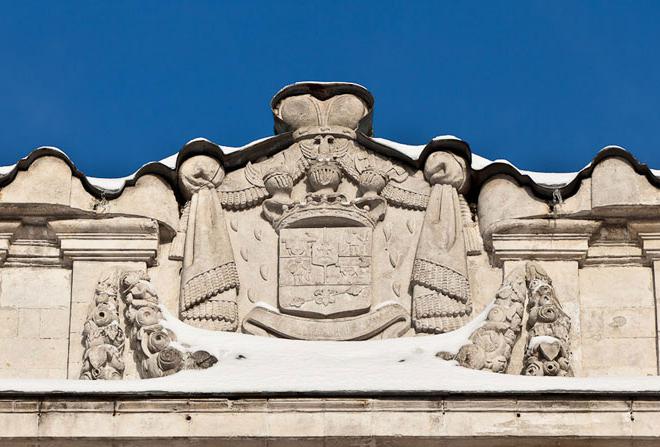
The second son was a governor, but he glorified his family in a very negative way - he took large bribes. The youngest son, Ivan Illarionovich, married Maria Volynskaya.
The great-grandson of the governor, Mikhail Semenovich, bravely commanded a division during the Patriotic War and established himself well as the tsar’s governor in the Novorossiysk region.
The childhood and youth of all the Vorontsov descendants are closely connected with the estate in Bykovo. The last owners of the estate were the Vorontsov-Dashkovs.
MM. Izmailov
In 1762, the Vorontsov estate in Bykovo became the property of M.M. Izmailov. A Turk by origin, in one of the battles he went over to the side of the Russian army and converted to Orthodoxy. For some time he served as the marshal of the royal court. Under Catherine II, he was appointed to the post of chairman of the Expeditions of Kremlin buildings.
Izmailov involved the most famous Russian at that time in the design and construction of the structure. However, the construction of the palace was soon suspended due to the enormous costs of maintaining the Russian army, which was fighting the Turks. Thus, the famous architect was left out of work.
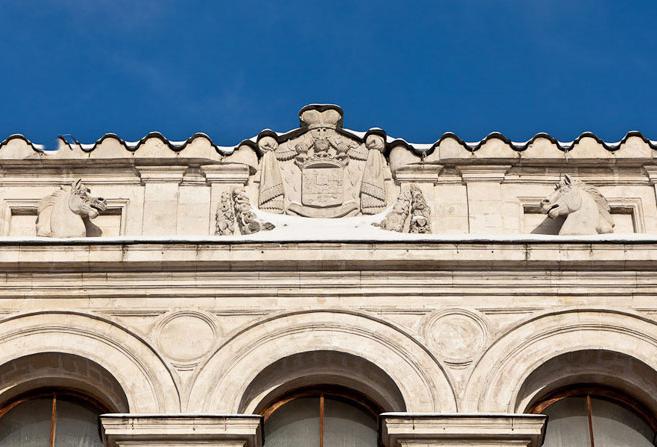
During this difficult time for the great architect, M. M. Izmailov ordered him to work in Bykovo. The estate was noticeably dilapidated and required serious reconstruction. Thanks to this coincidence of circumstances, the talented architect’s finest hour came.
Construction of a new palace
V.I. Bazhenov set to work with desire. We must give him his due, he made a bold decision - to completely change the appearance of the building. According to the architect's plan, the new Vorontsov-Dashkov estate in Bykovo was to be built in the western part of the estate, on an artificial hill. To do this, peasants carried earth in wicker baskets. Three artificial reservoirs were created in the places where the land was selected. Bazhenov’s plans included the creation of a real architectural and park ensemble, consisting of a church, ponds, a winter garden, a park, the Hermitage and a grotto. Unfortunately, the palace built by Bazhenov has not survived to this day.
Vorontsov-Dashkov estate in Bykovo
The palace, which is located in the estate today, was built by an already famous architect at that time, Bernard de Simon, a native of Switzerland, for Count I.I. Vorontsov-Dashkov - its last owner. In those days it was a rare surname. It belonged to E.R. Dashkova, who simultaneously lost her son and husband. In order to preserve the Dashkov surname, she turned to Alexander the First with a request to assign the surname to her great-nephew by husband, Ivan Illarionovich. Her request was granted.
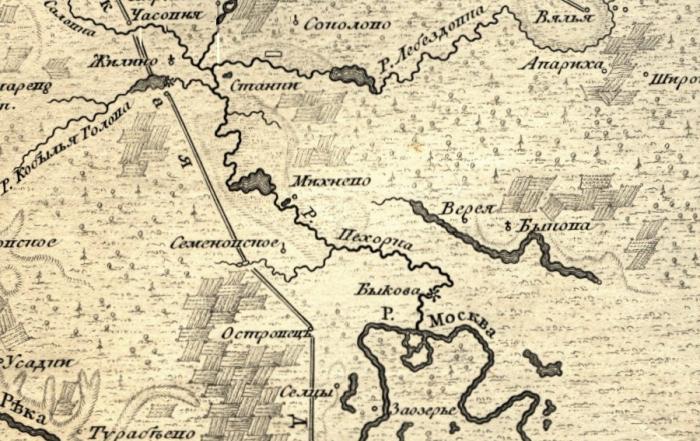
Bernard de Simon graduated from the Academy of Arts in St. Petersburg. He built a barnyard, a greenhouse and the main entrance to the estate. These days they are all lost. The entrance ramps and white stone balustrade have been preserved from Bazhenov's construction.
Palace in Bykovo
Even today, when this building is in very poor condition, it still makes a very strong impression. The palace was built in a traditional, strict style. Its four facades are completely different. The southern one is designed in a classic style. It is decorated with columns in the form of beautiful figures of women.
The walkway, which is located in front of the portico, has a balustrade with railings in the form of exquisitely shaped columns. On the left side of the palace a tower with a sundial was erected.
The northern façade is considered central. It is decorated with a magnificent arch, above which is the coat of arms of the Vorontsov-Dashkov family. The interior decoration of the house was also designed in the English style. Under the ceiling there was a frieze of portraits of the descendants of the Vorontsov-Dashkov family. The hall was decorated with a spiral staircase decorated in Baroque style. In the main hall of the palace, where ceremonial receptions were held, there was an organ made of silver pipes.
In the nineties of the nineteenth century, the Bykovo estate was sold, and according to another version, it was lost in cards to the Kazan Railway engineer N.I. Ilyin. The estate belonged to him before the revolution.
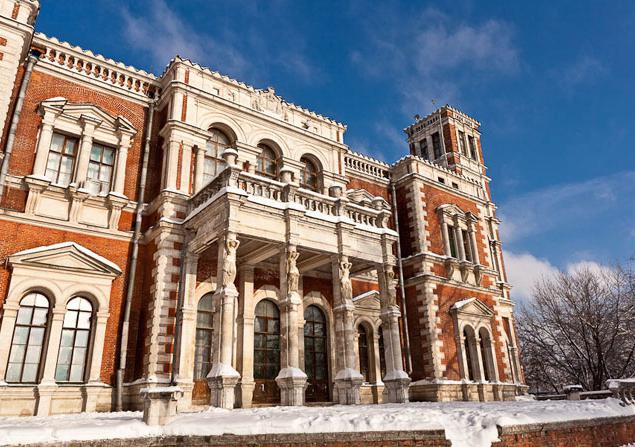
Bykovo: estate, church
The Temple of the Vladimir Mother of God was erected in Bykovo in 1789. Until now, researchers have not come to a consensus on what project it was built on. Some are sure that this creation belongs to V.I. Bazhenov, others prove that it belongs to A.N. Bokarev or M.F. Kazakov. The magnificent white stone church is made in the Russian Gothic style. It has no analogues in the architecture not only of the Moscow region, but throughout the country. There are two churches in the building - the Nativity of Christ and the Vladimir Icon of the Mother of God.
The main temple is oval, standing on a high crypt. A refectory and two bell towers are attached to it from the west. The structure is crowned by a rotunda with a high spire. It should be noted the luxurious decor of the temple.
The temple looks especially impressive from the western facade, from the location of the bell towers. A snow-white marble grand staircase leads to the main platform, located in front of the main entrance to the upper temple, and the lower temple is located below it.
The interior is decorated with artificial marble and wood carvings.
One of the towers was built as a bell tower with a platform for a bell-ringer, and the other - for a clock. In 1884, another bell tower was built, made in the same style, according to the design of I.T. Tamansky.
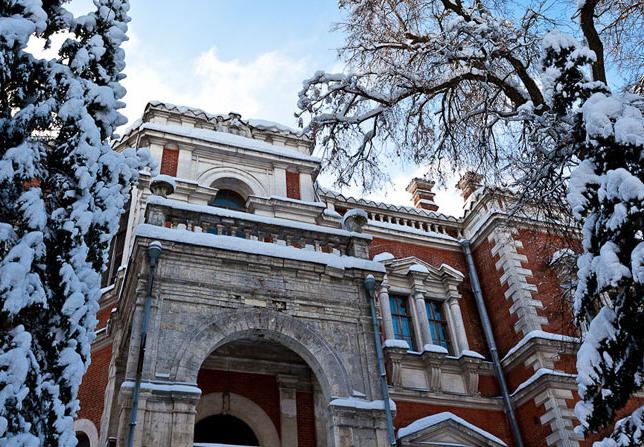
Church after the revolution
During Soviet times, the interiors of the church were badly damaged. In 1937 it was closed and ruined. Crosses were torn from the spiers and bells were removed. The most valuable church utensils and ancient books were mercilessly destroyed.
A sewing workshop was organized in the temple building. A little later it was converted into a film warehouse. Only in 1989 the temple was returned to the Russian Church. Divine services also began.
Temple of Ceres
Much is connected with the name of V.I. Bazhenov in Bykovo. The estate has a well-preserved snow-white gazebo on one of the islands of the pond - the Temple of Ceres. It is very harmonious and proportional. Three pylons are arranged in a circle, the columns support a cornice and a rounded dome. Unfortunately, the elegant bridge to the island has been lost, so the gazebo can only be reached by boat.
The sad fate of the estate
A unique complex, the Bykovo estate, the photo of which you see in this article, after nationalization was transferred to an orphanage where Red Army orphans were kept. Gradually, valuable things began to disappear from here - unique paintings, carpets, crystal chandeliers, handmade furniture. Then the organ was broken.
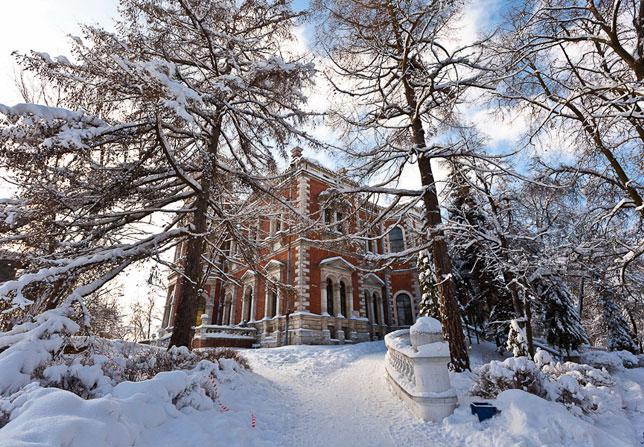
The luxurious pink alley has disappeared, the greenhouse has been destroyed, and the holy spring, where in the old days believers from all over the area went for healing water, is littered.
Gradually, the tenants of the palace began to change more and more often, and the losses from this became more and more noticeable. Eventually the stable disappeared and the Hermitage was dismantled.
After the war, new changes affected Bykovo. The estate was transferred to the fourth department of the Ministry of Health, and a tuberculosis dispensary began operating here. Dormitory buildings, or rather barracks, were built next to the palace.
Currently, the estate is completely abandoned, although some officials talk about sluggish restoration. If the attitude of the authorities towards this unique complex does not change, then very soon not a trace will remain of its former splendor and luxury.
How to get to Bykovo
The Bykovo estate, whose address is the Moscow region, Ramensky district, the village of Bykovo, despite its current neglect, annually welcomes thousands of tourists visiting these historical places. Even newlyweds come here for original photo sessions.
If you are interested in the Bykovo estate, a map of the Moscow region will show you the exact route. You can use public transport or a personal car.
Undoubtedly, this is an outstanding monument of Russian history and architecture - the Bykovo estate. How to get there by train? At the Kazansky station you need to take the train to Bykovo station, and then you have to walk two kilometers.
This path can also be covered by bus - from the station. Take bus 424 from Vykhino to the Club station.
For many it will be convenient to get to Bykovo by minibus. The estate is located near the “Club” stop. You will need minibus 525.

If you are planning to go to the estate by car, then you should take the Ryazanskoye Highway and drive until the turn to Bykovo. You can see the estate from the road.
Today the topic of our conversation was the Bykovo estate. You already know how to get there. All that remains is to advise: hit the road in time to see at least the remnants of this extraordinary beauty.
